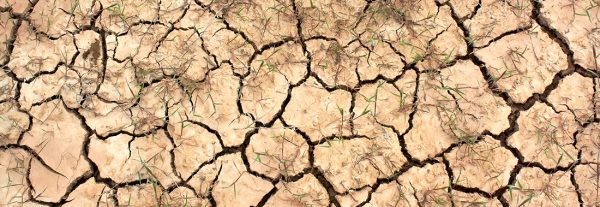Wheat farmers hate gophers. The little critters cut the stalks and run off with the grain—particularly when the year is dry and the crop is light. Furthermore, to the disgust of ranchers, they dig holes in pastures, where large and commercially valuable animals like cows and horses can fall and break their large and commercially valuable legs. On the other hand, gopher are valuable members of midgrass prairie communities. In dry years, they strip the leaves and seed heads from the grasses, limiting above ground vegetation that would otherwise transfer limited moisture from the perennial underground forest of roots and rhizomes to the air through transpiration. Gophers—and their allies in drought, the grasshoppers—invented the summerfallow, but they use it selectively, fallowing the most land in the driest summers. The grasses themselves co-operate—on tallgrass prairie, the big bluestem, Indian grass, and switchgrass grow eight feet high in moist years, while in dry years they fade back and let the little bluestem, the stypas, and the other “bunchgrasses” take over and hold the soil; thus, less foliage is exposed to transpiration and little ground to evaporation, again conserving water for the perennial root forest.[1] Wheat, on the other hand, is an annual grass. The gophers’ mowing may slow down transpiration, but there is no living root forest to benefit, only dead and shallow structures like frostkilled petunias in an urban flowerpot. Gophers’ incessant burrowing aerates the land and separates the root forest, thinning it out so it can breathe and grow, just as the urban gardener separates the rhizomes of iris. Gophers store their seed underground, and in the event of a long drought, these storehouses become one source for grassland regeneration after the return of the rains. Gophers are the messengers of Gaia, small piping indicators of the complex biofeedback mechanisms that mark the whole blue-green Earth as a single living organism of interlocked living systems.
The
Laramide orogeny of some 65 million years ago, the great collision of tectonic
plates that raised the Rocky Mountains, set up the conditions for the
grasslands ecosystem in the semi-arid rainshadow of the Rockies. The grasses
and the gophers co-evolved with the buffalo and other even bigger ruminants,
including something with a snout big enough to munch on Osage oranges. Badgers,
ferrets, and hawks ate gophers, as did coyote, the trickster. Long cycles of
glaciation and warming, drought and moisture, shaped the system. Rivers and
wind lay down soil and stripped it away again. Dune systems grew and moved.
Prairie pothole lakes formed in the remains of the glaciers, and waterfowl
thrived. The long and short cycles of weather coiled past each other, and the
gophers brought forth their young. When the first humans came onto the
grasslands, whether emerging from the earth as the old stories tell or coming
down from the north as more recent commentators would have it, they fit
themselves into the cycles of the grasslands. It may be that they killed off
the megafauna, or, more likely, that the cycles of cold and heat, moisture and
drought no longer favoured the giant bison, the mastodons, and the others.[2]
But the grass and the gophers continued their dance through the processions of the
equinoxes and the tilts in the earth’s orbit that change the name of the fixed
star. At some point, the people began firing the grass, pushing the woody
plants back to the verge of the creeks, and removing the overburden of dead plants.
The young shoots showed improbably green on the scorched earth, and the buffalo
and the gophers came to feast on bounty coming, like asparagus, from the deep
and long-lived roots. Women with digging sticks foraged for prairie turnip,
timpsila, and other roots, and joined the gophers in the work of aeration. The
people lived well—they lived well indeed. Prairie is a diverse ecosystem,
offering hundreds of plants and animals for food, medicine, inspiration, and
co-management. But hunger, want, and warfare came too, as part of the cycle—and
hard work and danger. Peoples moved. Newcomers came. And every year the gophers
brought forth their young and the bison calves looked red in the sun and the
grasses turned their tender faces to the sky.
[1] See Stan Rowe, Home Place: Essays on Ecology, rev. ed. (Edmonton: NeWest Press, 2002), 178.
[2] See Robert Diffendahl, “Plate Tectonics, Space, Geologic Time, and the Great Plains: A Primer for Non-Geologists,” Great Plains Quarterly 11, no. 2 (Spring 1991): 81–102; Norman Rosenberg, “Climate of the Great Plains Region of the United States,” Great Plains Quarterly 7, no. 1 (Winter 1987): 22–33; Kathy Keeler, “Influence of Past Interactions on the Prairie Today: A Hypothesis,” Great Plains Research 10, no. 1 (Spring 2000): 107–26; Don Gayton, The Wheatgrass Mechanism: Science and Imagination in the Western Canadian Landscape (Saskatoon: Fifth House, 1990) 125–33.
![[book cover] Goodlands](https://www.aupress.ca/app/uploads/120192_Goodlands-cover.jpg)
You can download Goodlands for free on our website.


